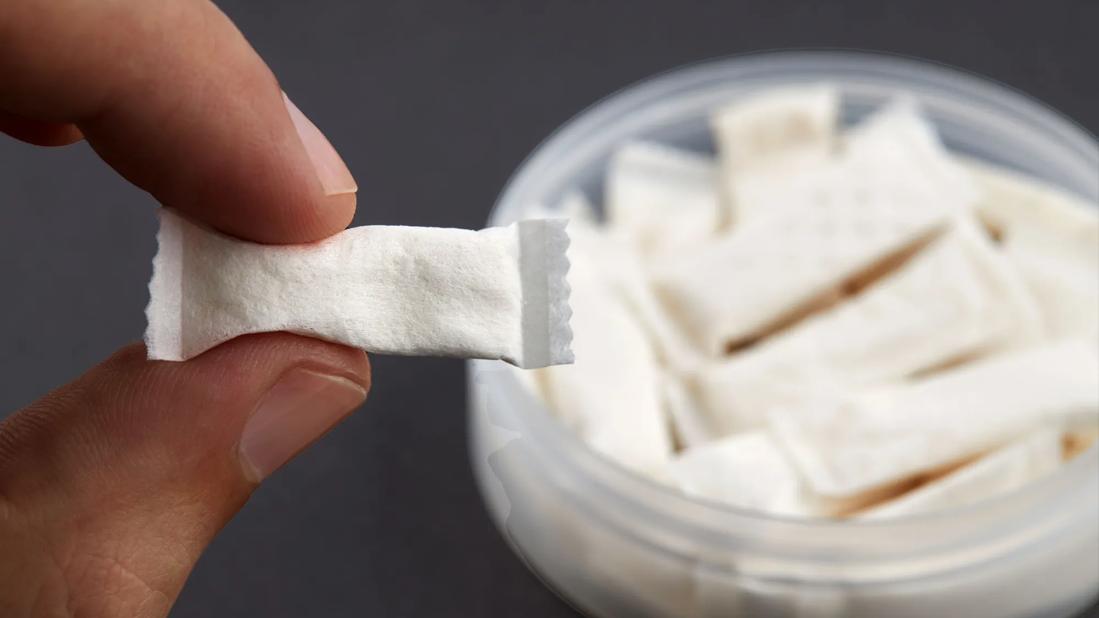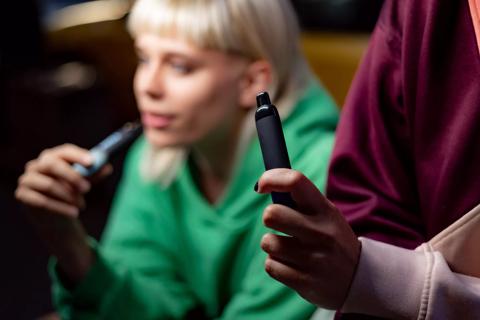They don’t contain tobacco, but these toxic, highly addictive products can permanently damage your health

Cigarette use in the United States is at an all-time low — great news, as the tobacco in cigarettes can cause cancer.
Advertisement
Cleveland Clinic is a non-profit academic medical center. Advertising on our site helps support our mission. We do not endorse non-Cleveland Clinic products or services. Policy
But people are still finding ways to use nicotine, an addictive chemical found in tobacco. According to the National Institute on Drug Abuse (NIDA), more than 20 million people in the U.S. report that they’re dependent on nicotine, and nearly 25% of 12th graders say they’ve used nicotine recently.
“Non-tobacco nicotine products like nicotine pouches are quickly flooding the market,” shares pulmonologist Humberto Choi, MD. “Many people see them as a healthier alternative to tobacco products, and young people are drawn to them. But even though they don’t have tobacco, nicotine products can be harmful.”
Dr. Choi shares what you need to know about nicotine pouches.
Nicotine pouches are small, rectangular pouches filled with powdered nicotine, preservatives and other fillers (for flavor). The pouches don’t include tobacco leaves, so they aren’t considered to be carcinogens (cancer-causing). They’re sold in varying strengths, but typically have a high concentration of nicotine.
“These tiny pouches can be especially attractive for young people,” Dr. Choi says. “Companies market nicotine pouches in colorful packaging, and they come in flavors like berry and peppermint.”
To use a nicotine pouch, you put it between your top lip and gum and leave it in place for 15 to 45 minutes — depending on the brand. Your body absorbs the nicotine through the tissue lining your mouth, and it enters your bloodstream.
Advertisement
Within 10 seconds of entering your body, nicotine reaches your brain, where it causes a release of adrenaline. Most people feel immediate pleasure and a slight jolt of energy.
The buzz you get from nicotine doesn’t last long, and most people tend to miss the feeling when it’s gone. The more nicotine you use, the more nicotine your body needs to get back to that buzzy feeling, leading to addiction.
When people say it’s challenging to stop smoking, it’s because of a nicotine dependency. NIDA reports that half of smokers try to quit each year, but only 6% succeed. Nicotine pouches are often used as a step-down from smoking because they continue to provide nicotine as you withdraw from tobacco products. But for people who’ve never used nicotine, the pouches can create problems where they didn’t exist before.
“Nicotine is highly addictive,” Dr. Choi states, “and the nicotine dose in some pouches can be higher than in cigarettes. Using a high-dose pouch can be like smoking multiple cigarettes at one time.”
Nicotine pouches only became available in the U.S. in 2014, so we don’t know all their long-term effects. But we know that nicotine:
“We’re seeing more and more reports of young people who regret beginning to use nicotine pouches,” Dr. Choi says. “They only see the negative effects once they have symptoms, some of which can be severe. But by then, they are addicted, and it’s hard to stop.”
In the short term, he adds that nicotine pouches may cause stomach pain and tooth discoloration. And while experts still don’t know exactly what health issues nicotine pouches may cause, possible long-term effects may include:
“Some of the symptoms nicotine pouches cause may seem minor at first,” he cautions. “But when you ignore those symptoms and continue to use them, the damage builds and may cause serious health issues over time.”
Here’s how nicotine pouches compare to some other nicotine-containing products.
Nicotine pouches (and vapes, or e-cigarettes) don’t have tobacco, so they may carry less risk of cancer than traditional cigarettes. In terms of delivering nicotine, pouches differ from smoking and vaping in several ways, including:
Advertisement
Nicotine pouches also differ from chewing (smokeless) tobacco. Chewing tobacco contains cancer-causing carcinogens, while pouches do not, as they’re tobacco-free. But both smokeless products involve absorbing nicotine through mouth tissue. That means you absorb and metabolize nicotine in the same way. As a result, pouches and chewing tobacco can affect both your gum and GI health.
If you’re trying to quit tobacco use, nicotine pouches may be helpful. But they’re addictive and pose their own health risks. If you want to quit smoking, talk to a healthcare provider about the most effective, safest ways to quit.
Advertisement
And if you don’t smoke, be aware: Pouches aren’t a safe alternative to cigarettes.
“Don’t underestimate the potential health risks associated with nicotine dependence,” Dr. Choi stresses. “Just trying nicotine pouches can be highly addictive, and it’s a substance our bodies don’t need. Nicotine has potentially severe short-term and long-term effects. I wouldn’t consider any product like that to be safe.”
Advertisement
Learn more about our editorial process.
Advertisement

Smoking can make symptoms from cancer treatment worse, and can even make treatments less effective

Smoking, including secondhand smoke, can worsen your asthma triggers and damage your airways

From dental diseases to cardiovascular problems, the harmful effects of smoking hookah have plenty of downsides for your health

Puffing on cigarettes is the leading cause of bladder cancer

Vaping exposes you to thousands of chemicals, including many that cause cancer and lung disease

Nicotine replacement products and relaxation techniques can help you ditch the dip

Even only a couple cigarettes a day can lead to potentially deadly lung diseases like COPD and emphysema

Your risk goes down once you quit, but you may still need a lung cancer screening

Start having sex about 72 hours before ovulation, then at least every other day during your fertile window

Attachment theory suggests that your earliest relationships shape connections throughout your life

It isn’t a recognized mental health disorder, but research shows that problematic social media use can negatively affect your mental health, self-esteem and sleep